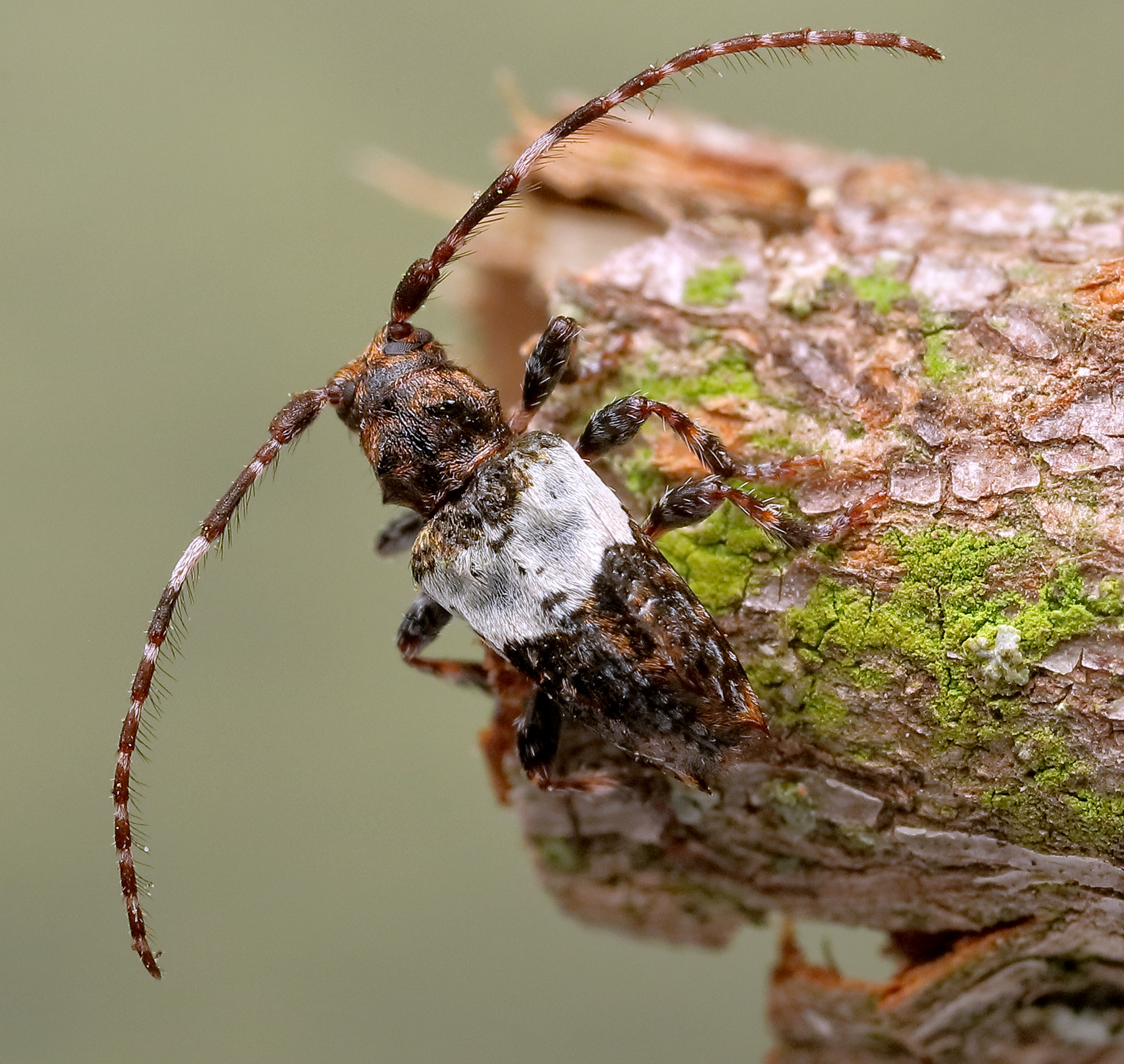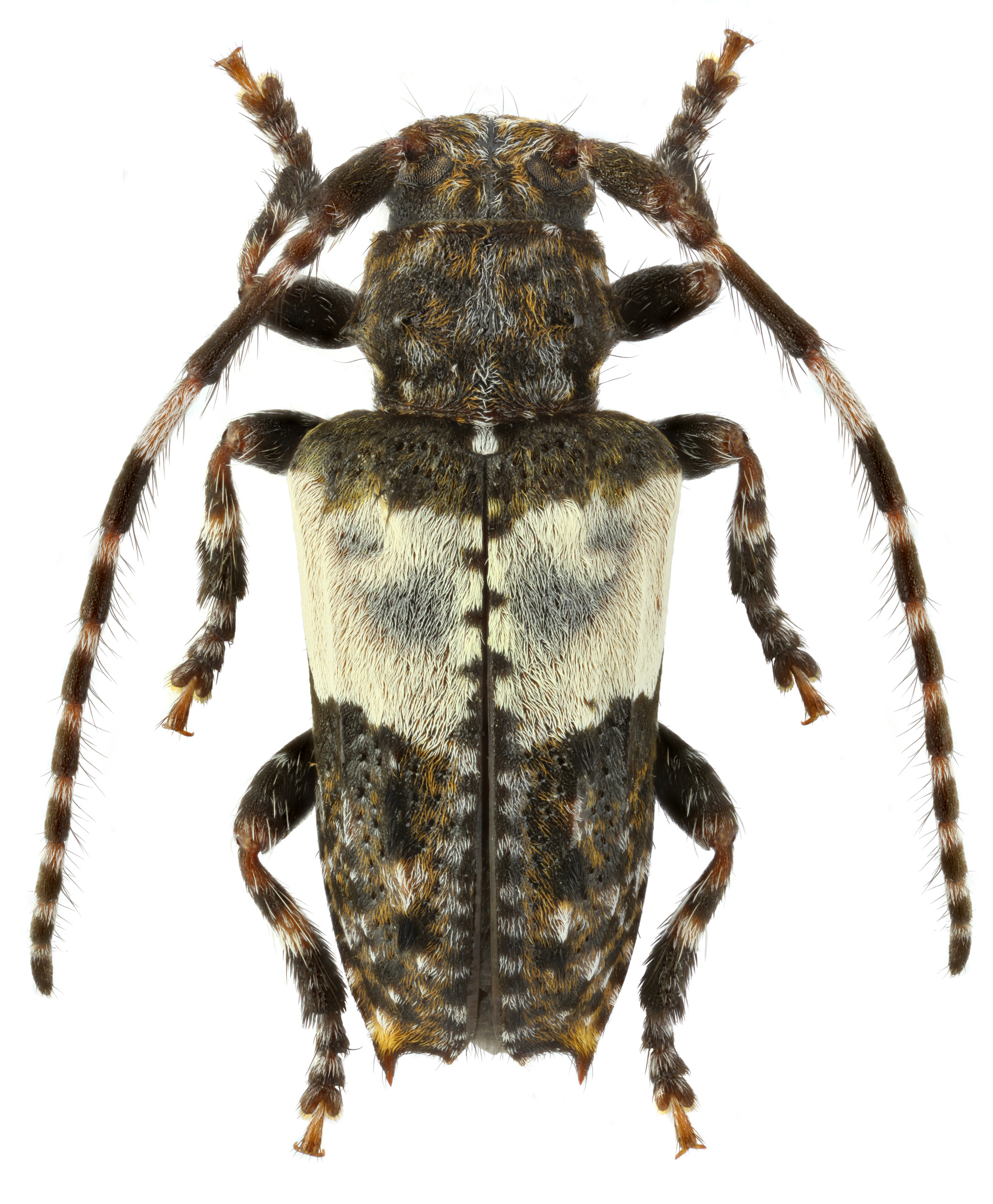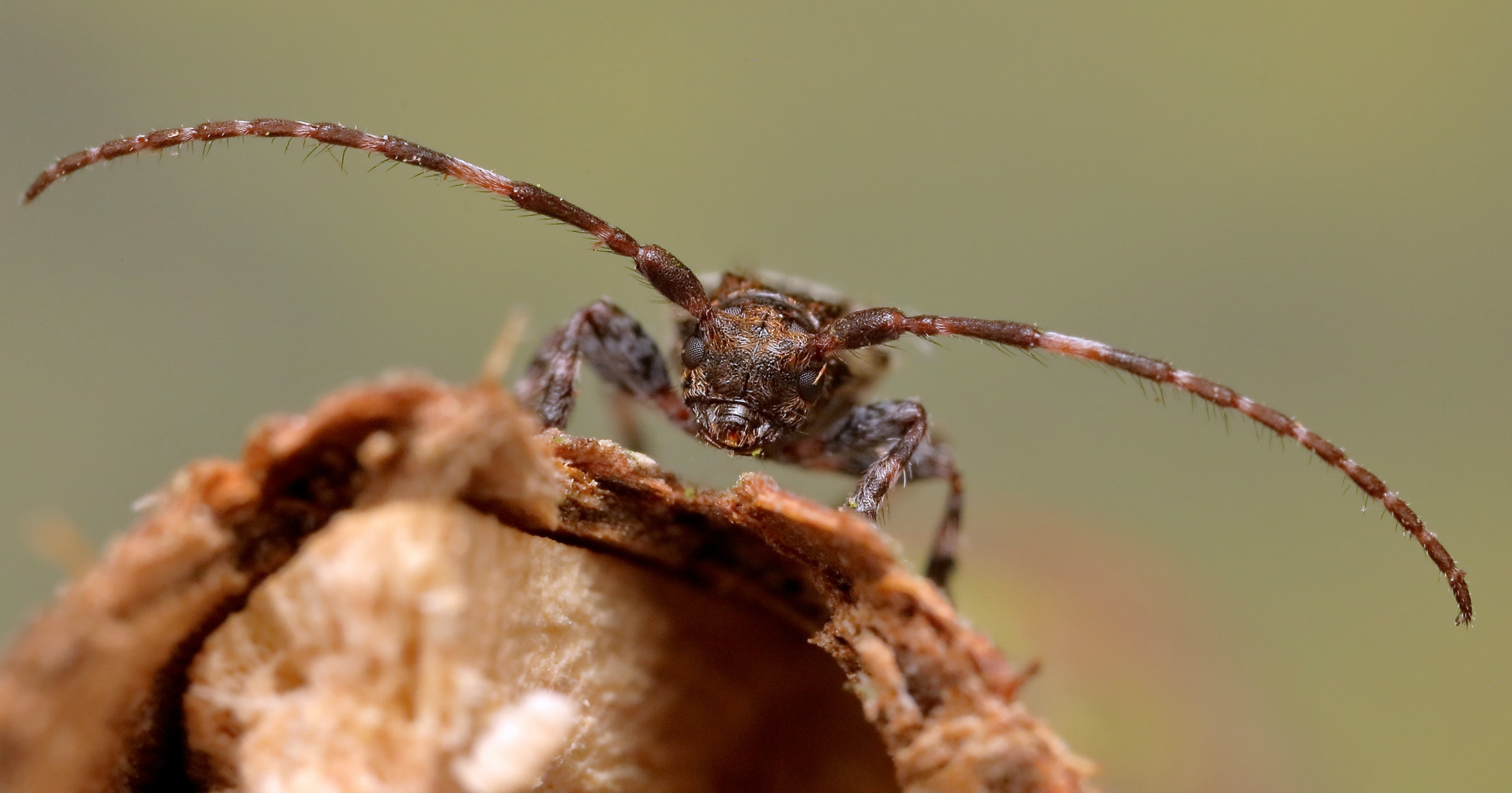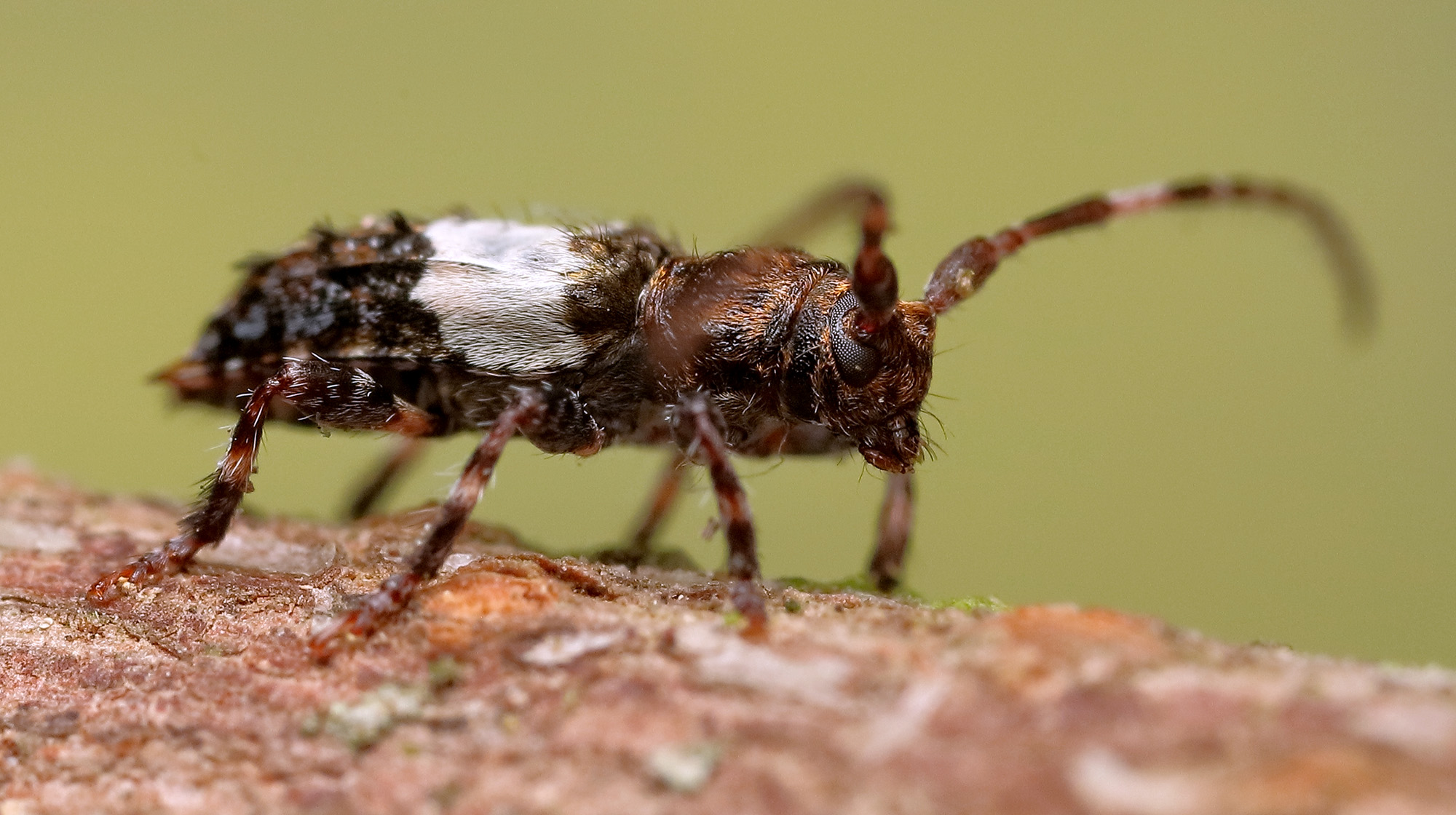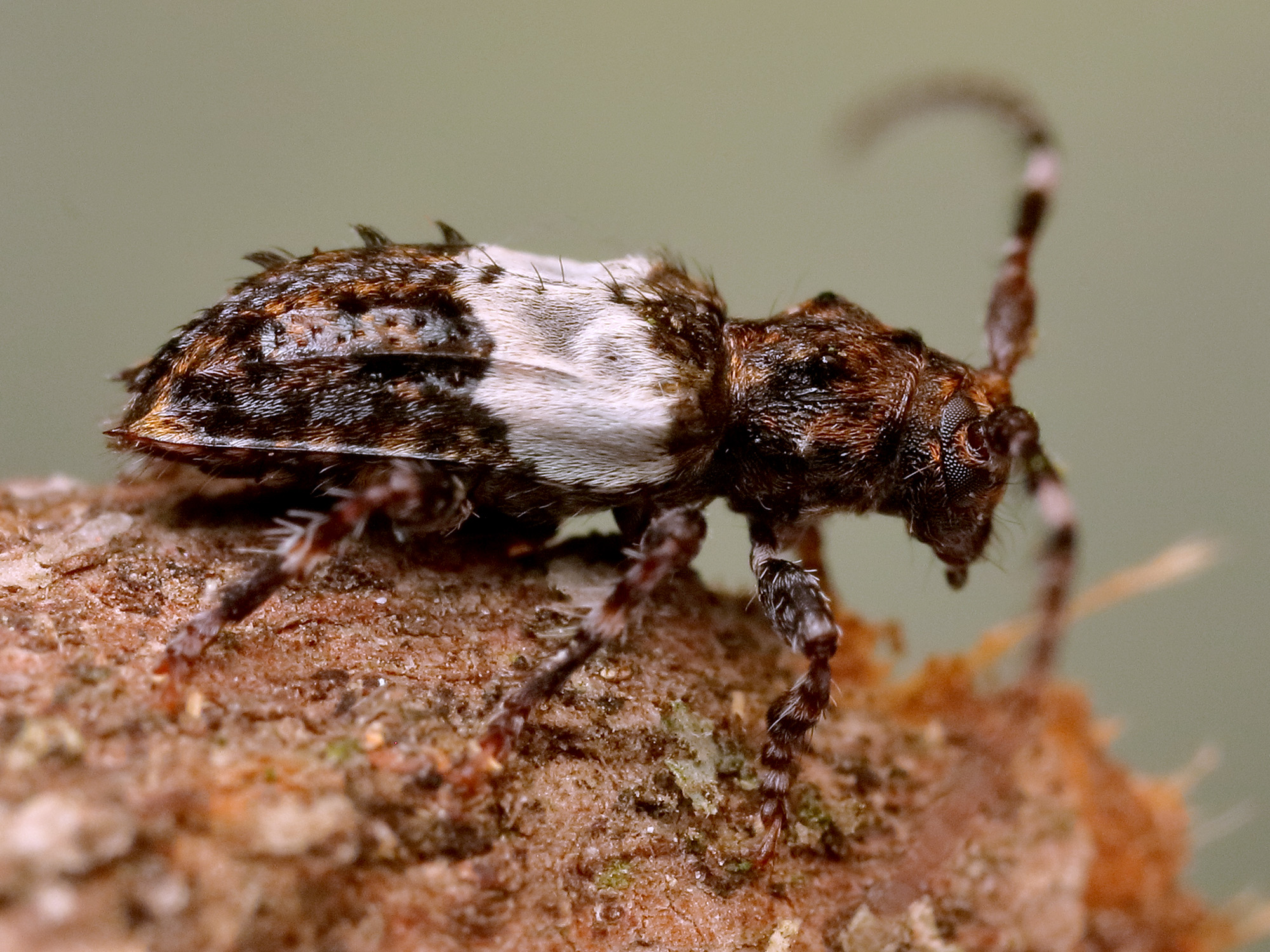Pogonocherus hispidulus, a quite abundant Euro-Siberian species occuring from Portugal to the Urals, develops in a wide range of deciduous trees and shrubs.
Development under the bark of weak, weakened and freshly dead branches and twigs. The larvae feed under the bark,
at an advanced stage of development they also consume a surface layer of sapwood and plug the galleries with smaller wood shavings. To pupate, the larva forms a hooked,
often just oblique oriented pupal cell below the wood surface. Life-cycle 2 years, adults can be beaten from dry branches and brushwood from April to August [❖][✧].
Pogonocherus hispidulus has been described from Slavonia (Croatia) as Cerambyx hispidulus by Matthias Piller and LudwigMitterpacher von Mitterburg in 1783 [✮].
| Body length: | 5 - 9 mm |
| Life cycle: | 2 years |
| Adults in: | April - August |
| Host plant: | polyphagous in deciduous trees and bushes (Frangula, Alnus, Betula, Salix, Corylus,
Malus, Carpinus, Quercus, Euonymus, Malus, Amelanchier, Viburnum, Fagus, Crataegus, Sambucus,
Juglans, Viscum) |
| Distribution: | Europe, Caucasus, Russia, Near East, Turkey |
The depicted living beetle was reared from a larva found in a dead twig of mistletoe (Viscum album) in Křivoklátsko Protected Landscape Area (Central Bohemia, Czechia).
The mounted female beetle was captured in Manakhino railway station environs (Istrinsky district, Moscow Oblast, Central Federal District, Russsia) on May 9, 2019.
Collected by Miroslav Polcar and E. Shankhiza
[❖]
Sláma M.E.F.:
Tesaříkovití – Cerambycidae České republiky a Slovenské republiky / Cerambycidae of the Czech Republic and Slovak Republic.
Milan Sláma private printing, Krhanice, 383pp [pages 289-290], 1998 [ISBN: 80-238-2627-1].
[download  ]
]
[✧]
Vitali F.:
Atlas of the Insects of the Grand-Duchy of Luxembourg: Coleoptera, Cerambycidae.
Ferrantia, Musée national d’histoire naturelle, Luxembourg 79: 1-208 [pages 140-141], 2018.
[download  ]
]
[✮]
Piller M. and Mitterpacher von Mitterburg L.:
Iter per Poseganam, Slavoniae provinciam, mensibus Junio et Julio anno MDCCLXXXII susceptum, a Mathia Piller, historiae naturalis, et Ludovico Mitterpacher, oeconomiae rusticae in regia Universitate budensi professoribus, presbyteris.
Budae, typis regiae Universitatis, anno MDCCLXXXIII: 1-147, 1783.
[download  ]
]
